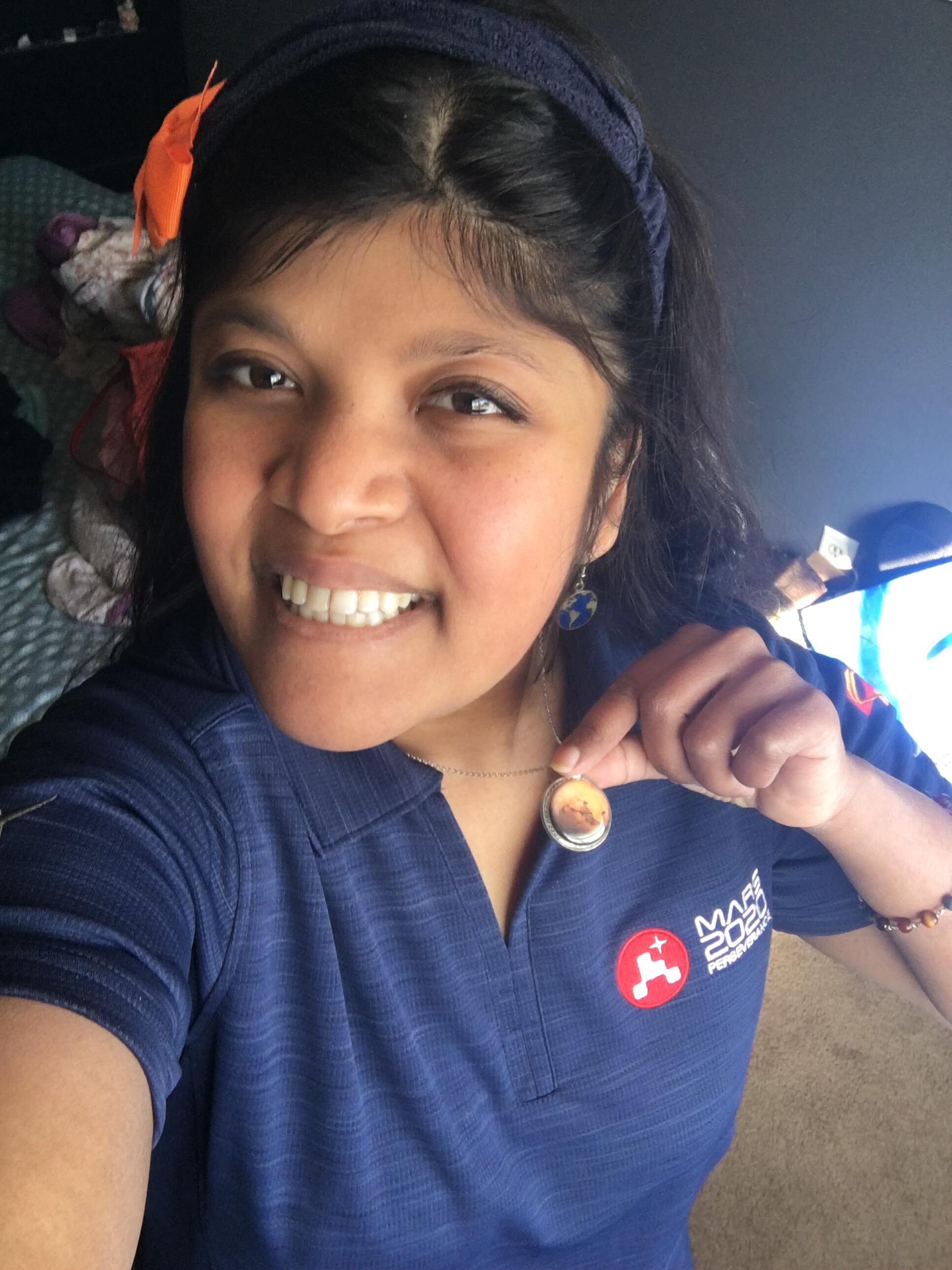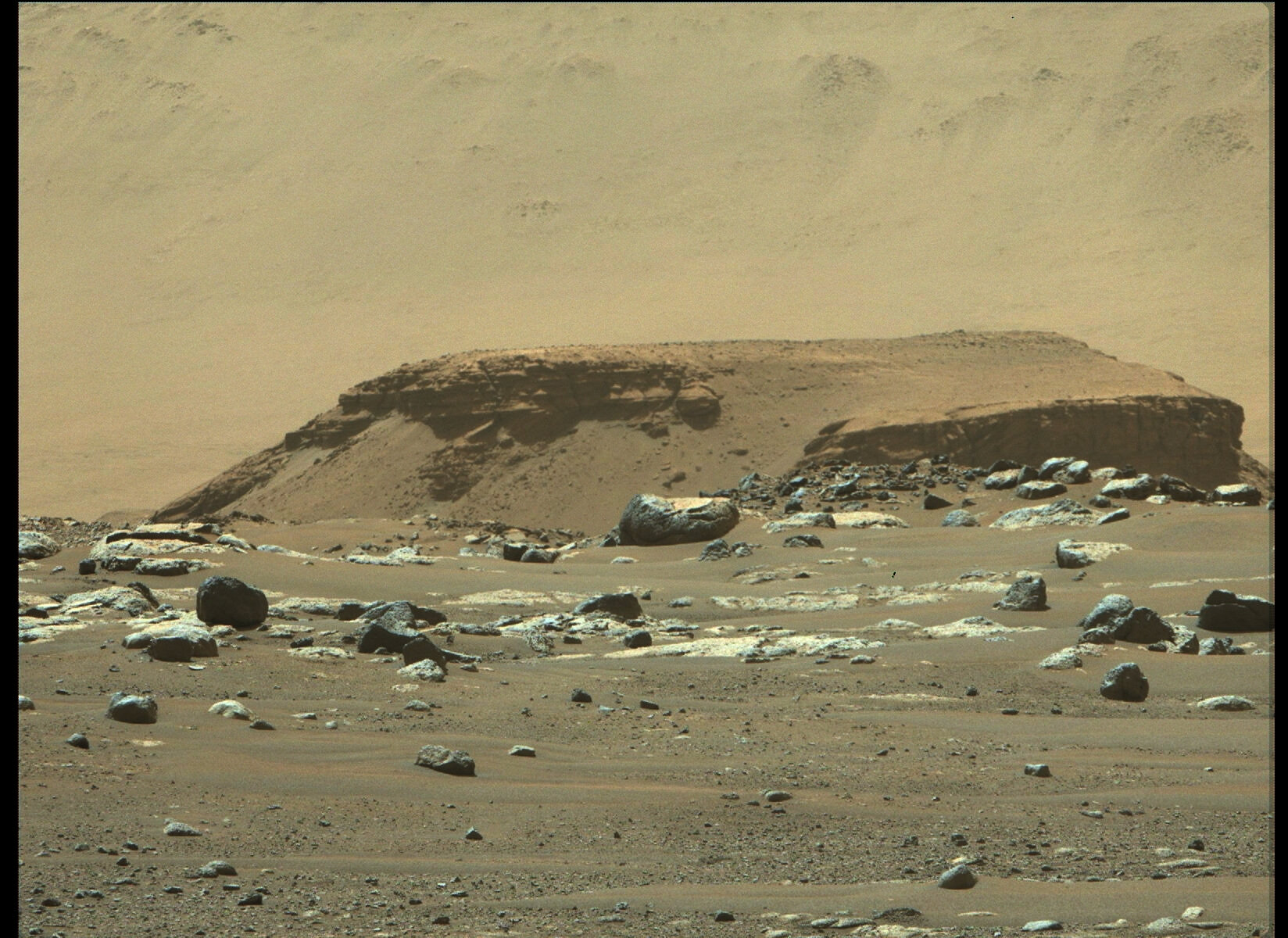Mohini Jodhpurkar, Aspiring Planetary Geologist, on her Mars Rover Journey
By: Aastha Uprety
Growing up, Mohini Jodhpurkar wanted to be a science officer on the Enterprise. She loved Star Trek and science fiction, and according to her parents, she says, she could recite the names of the planets in order before she was two years old.
Jodhpurkar, 24, is now a PhD student at Arizona State University’s School of Earth and Space Exploration, where she studies geological sciences. Her focus is on planetary geology, and she’s currently living her childhood dream as a student researcher on the ASU team working with NASA’s Perseverance Mars rover.
While it’s not traveling through space on the Starship Enterprise, Jodhpurkar said, “this feels the closest I can get to that.” She’s thrilled to be exploring a fascinating new world.
---
Mohini Jodhpurkar
Jodhpurkar’s journey to becoming a geologist began on the East Coast. She grew up in northern Virginia and first became interested in earth science and geology after taking a class in high school.
“One of the coolest things about geology is that you can see a mountain and be like, ‘Oh, I can tell exactly how this got here,’” she said. “I love that aspect of being able to read the earth.”
Jodhpurkar attended college at William & Mary in Williamsburg, VA, where she took a course called Planetary Geology. It was her first time learning about that specific field of study, which she explains as using principles of earth science to understand the geology and history of other planets.
“Every other planet is kind of a mystery,” Jodhpurkar said. “And these are some of the only tools we have to solve that mystery—our own experience on Earth.”
Jodhpurkar first applied to graduate school during her senior year of college, but she was rejected from the programs she applied to. “Sometimes things just don't work out,” she said.
So Jodhpurkar changed course, moving out of Virginia for the first time and heading to Flagstaff, Arizona, to work for the U.S. Geological Survey. There, she solidified her love for research and gained valuable mentorship. “I learned a lot from [my supervisors] about life and how to navigate this field as a woman,” Jodhpurkar said. “That was really rewarding for me.”
After a year, she applied to graduate programs again, this time with a clearer focus.
“I had a vision for what I really wanted to do, and that was to be involved with one of the [Mars] missions,” Jodhpurkar said. She knew Perseverance was slated to launch in 2020, and so that promise paired with ASU’s renowned status as a space research university brought her to Tempe, AZ. The ASU team, led by her PhD advisor Jim Bell, had overseen the development of the Mastcam-Z camera system attached to the rover, which functions as the machine’s eyes.
NASA shot the Perseverance rover into the sky on July 30, 2020, a month before Jodhpurkar began her PhD program. Along with a small helicopter named Ingenuity, the rover was on its way to look for signs of ancient life on the red planet.
Jodhpurkar was excited to see it launch successfully. “That was the first hurdle you have to cross,” she explained. “If it blows up in the [Earth’s] atmosphere, you’re already done.”
---
The day before Perseverance was scheduled to end its nearly 6-month journey and land on Mars, Jodhpurkar gathered with the ASU research team for the first time in-person. They held a toast.
“Make sure you write down how you feel tomorrow,” a senior researcher told the junior members of the team, “because you're never going to have another first mission.”
On February 18, 2021, as Perseverance came closer and closer to touchdown, the team gathered around the television screen.
Their eyes were glued to the livestream from Mission Control at NASA’s Jet Propulsion Laboratory in Pasadena, California. In a dark room full of computer screens and glowing blue light, the NASA operations team announced each cleared checkpoint. In Arizona, Jodhpurkar and her colleagues cheered as each hurdle was passed.
Perseverance was aiming to land in Jezero Crater, the most difficult landing on Mars to date. The rover was hurtling through space at 12,500 miles per hour before it entered the red planet’s atmosphere, where it battled scorching heat as it began to slow down. The intimidating deceleration was assisted by a 70-foot-wide parachute encoded with NASA’s slogan, ‘dare mighty things’.
After what scientists have aptly nicknamed the ‘seven minutes of terror’, at 1:55 p.m. Arizona time, it was announced that the rover had gently touched down on the surface of Mars.
The ASU researchers cheered and celebrated, banging on the windows of their lab. “I started actually like, jumping up and down,” Jodhpurkar said. “It was just really exhilarating.”
“Even after I drove home,” she said, “I would periodically tear up when I thought about what we've been able to accomplish.”
While Jodhpurkar’s parents, mentors, and supervisors have been supportive and nurturing so far in her career, it hasn’t always been easy. Planetary geology tends to be somewhat more gender equal than other scientific fields—partially due to its relatively recent formation in the 1960s—but Jodhpurkar says there’s still work to do in terms of race and other forms of diversity.
During her first round of applying to graduate programs, Jodhpurkar reached out to a prominent scientist in the field. He responded to her long, thoughtful email with a one-line rejection stating that their team can only work with U.S. citizens. The incorrect assumption about her nationality was made solely on Jodhpurkar’s Indian name.
“It was upsetting for me at the time, but I kind of ignored it and pushed through,” Jodhpurkar said. Now that she’s working on the very subjects she was once unfairly pushed away from, “it feels almost like poetic justice, in a way. I’m really grateful.”
Indian American NASA scientist Swati Mohan was the face of the rover landing livestream. Like Jodhpurkar, she was inspired by Star Trek growing up. “It was really cool to see an Indian American woman, with the bindi on and everything, as the person announcing the mission on international TV,” Jodhpurkar said.
“Knock on wood, if I do end up getting far in this field,” she added, “then hopefully I’ll help other young women realize, ‘Oh, this is achievable.’”
Jodhpurkar’s passion for her work extends beyond her love of research—she also thinks science communication is critical.
“I always feel like you’re not really a good scientist if you can't explain your research to an eight-year-old,” Jodhpurkar said.
At one point, Jodhpurkar had wanted to be a high school science teacher. Whether or not she becomes an instructor in the future, she’s committed to educating and building trust with the public in her work. “Things are always more exciting when you're able to get other people excited about them,” she said.
That’s part of why the Mars rover mission appeals to her so much—it gives scientists the opportunity to share their research with the world. “It isn't just us who are excited about this,” Jodhpurkar said. “Everyone across the world is excited about Mars and seeing new pictures from Mars. So I think this is a really golden opportunity to bridge that gap.”
Perseverance landed near an ancient river delta in Jezero Crater, a basin that was filled by a lake billions of years ago. This site was carefully selected for its sediment deposits—each layer captures a period of the planet’s history and could contain clues about past life on Mars.
“From its landing site, ‘Octavia E. Butler Landing,’ NASA’s Perseverance rover can see a remnant of a fan-shaped deposit of sediments known as a delta with its Mastcam-Z instrument.” Source: NASA
Jodhpurkar’s current PhD research involves mapping another area of Jezero Crater, a sediment deposit that may or may not be linked to the delta Perseverance is exploring.
She also takes part in analyzing the daily photos and test results coming in from the rover. Taking turns working 10-hour shifts, the ASU researchers were among the first people in the world to have access to this data.
After relying solely on satellite imagery for the past several months on the job, Jodhpurkar talked about how mind-blowing it is to see real photos from the crater—many of which are courtesy of ASU’s Mastcam-Z. Compared to images captured from above, photos from the surface give a much better sense of the scale of what you’re seeing, she says. They’re grander and more impressive.
“It's like, wow, even though I'm only a first year PhD student, I'm actually contributing something big to science,” says Jodhpurkar. “No one has ever seen this place before. This is legitimately the first time we're here.”
One of Perseverance’s objectives is to drill into the ground, core surface samples from Jezero Crater, bottle them up in tubes, and leave them on the surface of Mars for a future mission to collect and return to Earth for analysis. It would be the first time Martian surface samples are brought back to Earth, and the first time a launch is attempted from another planet. It’s a daunting task, and scientists expect it’ll be another decade before NASA brings the samples home.
Ten years from now, Jodhpurkar hopes to still be working with Perseverance in some capacity.
While it’s only been a few weeks so far of analyzing data straight from Mars’ surface, Jodhpurkar said confidently: “This is probably the coolest thing I've ever done.”
Aastha Uprety MPA ’21 is studying social policy and media & communications at SIPA. You can follow her on Twitter @aasthauprety.


